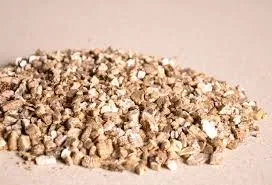Okt. . 31, 2024 10:16 Back to list
raw materials for steel making
Raw Materials for Steel Making
Steel, one of the most widely used materials in the world, plays a crucial role in various industries, including construction, automobile manufacturing, and machinery production. The production of steel requires significant amounts of raw materials, each playing a specific role in the steel-making process. Understanding these raw materials is fundamental to grasping how steel is produced and the factors that influence its quality.
Raw Materials for Steel Making
Coke, produced through the destructive distillation of coal, serves a dual purpose in the blast furnace. Firstly, it acts as a fuel source, providing the necessary heat to melt the iron ore. Secondly, coke carbon reacts with oxygen in the iron ore, reducing it to iron. The reduction process is vital as it transforms iron ore, which contains impurities, into molten iron. Maintaining the right balance of coke in the blast furnace is crucial, as too much or too little can affect the efficiency and output of the steel-making process.
raw materials for steel making

Limestone, primarily composed of calcium carbonate (CaCO3), is added to the blast furnace to remove impurities from the iron ore. When limestone is heated, it decomposes into lime (CaO) and carbon dioxide (CO2). The lime then combines with impurities such as silica (SiO2) to form slag, which is a byproduct of the steel-making process. Slag acts as a protective layer on the molten steel, preventing oxidation and enhancing the overall quality of the final product.
In addition to these primary materials, recycling scrap steel has become an increasingly important aspect of steel production. The use of electric arc furnaces (EAF) allows for the melting of scrap steel, which is then refined and cast into new products. This method is not only environmentally friendly but can also reduce the reliance on virgin raw materials. As steel recycling rates rise, the steel industry is working towards a more sustainable future.
Furthermore, advances in technology have led to innovations in the steel-making process, such as the development of direct reduced iron (DRI) and the use of hydrogen as a reducing agent. These methods aim to lower carbon emissions and improve the efficiency of steel production, aligning with global efforts to combat climate change.
In summary, the raw materials for steel making—iron ore, coal, limestone, and recycled scrap steel—play vital roles in producing high-quality steel. Understanding the importance of these materials and their interaction in the production process contributes to advancing more sustainable and efficient steel manufacturing methods. As the demand for steel continues to rise, the industry's ability to adapt and innovate will be essential in meeting future challenges.
-
High-Quality Fe-C Alloy Leading Manufacturers & Spherical Alloy Materials Supplier
NewsJun.10,2025
-
Premium Low Nitrogen Recarburiser Supplier & Manufacturer – High Quality Exporters
NewsJun.10,2025
-
DT4 High-Quality Magnetic Materials Leading DT4 Manufacturer & Supplier
NewsJun.10,2025
-
High-Performance Spring Steel Suppliers Custom Solutions
NewsJun.10,2025
-
Premium SWRCH6A Manufacturer Steel Wire Supplier & Factory
NewsJun.10,2025
-
Premium Mild Steel Wire Rod Supplier & Manufacturer
NewsJun.10,2025
